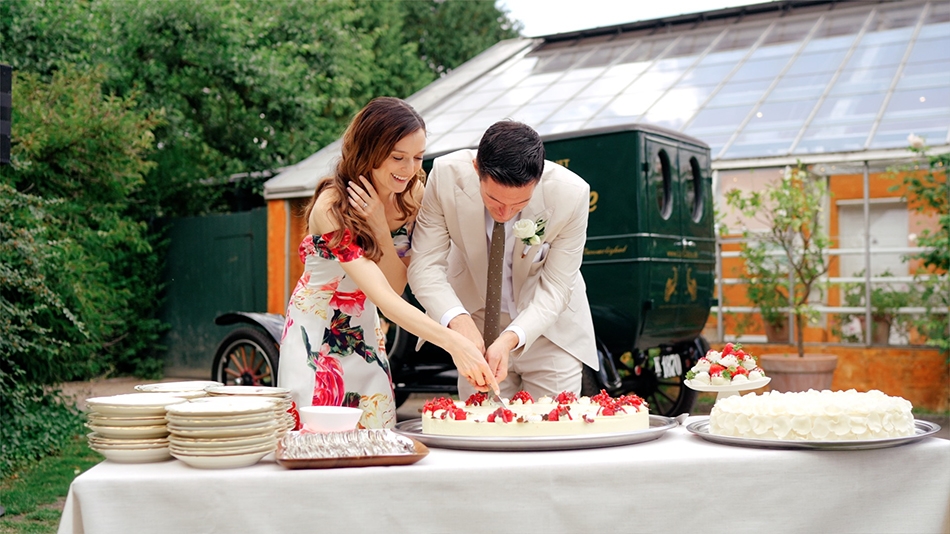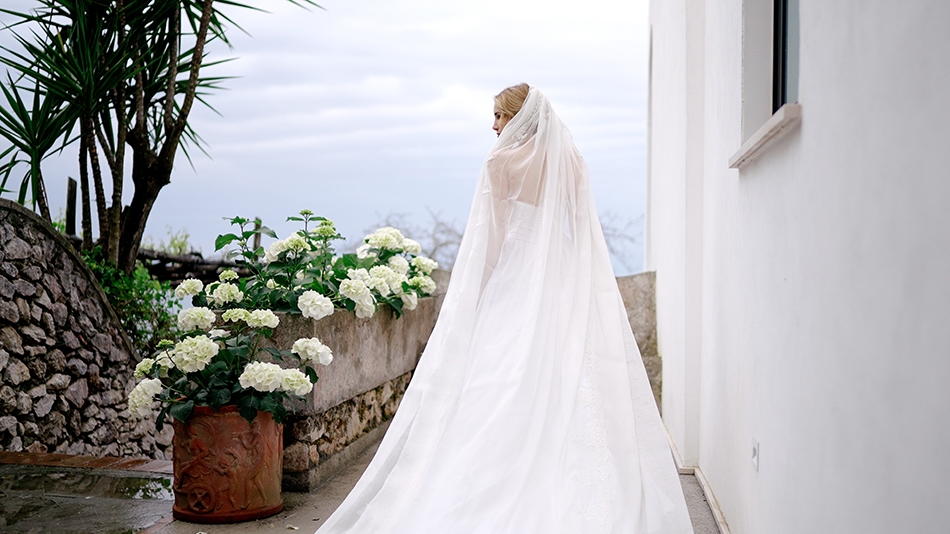At a wedding, we experience moments and wear objects that we now consider traditional, but which in reality contain profound and ancient meanings. Rings, bouquets, and wedding veils are chosen with emotion and care to celebrate the wedding. The explanation of the symbolism that hides behind these elements linked to marriage has deep roots linked above all to religion.
In this article, we will explore not only the most classic symbols but also the hidden values and meanings that make wedding rituals and objects unique, often overlooked but of great importance.
The Symbolism of Marriage: The Meaning of Wedding Rings Explained
We could only start with the explanation of the symbol par excellence of marriage: wedding rings.
After all, to celebrate your union, only the rings and your promises would be enough. But did you know that, in addition to establishing mutual commitment, the circular shape of the wedding rings also carries with it a profound meaning?
The circle represents the perfect union between mind and body, while gold, the material with which they are usually made, symbolizes eternity. By juxtaposing the two faiths, the figure of the infinite is created, an image that recalls the endless love that they promise to safeguard.
The Wedding Bouquet
Since ancient Greece, flowers, thanks to their scent, were considered powerful protectors against evil spirits and were used not only for the bride’s bouquet, but also to adorn the dresses of the guests.
But the wedding bouquet also contained another important meaning: in ancient times, in fact, it was often composed of aromatic herbs, to which aphrodisiac properties were attributed. Therefore, the explanation of this symbolism can be attributed to the perfumes and aromas that were released by the flowers, considered a good omen for the wedding and for the spouses, wishing them prosperity and harmony in their new life together.
To date, the throwing of the bridal bouquet represents one of the most iconic traditions of the wedding, a symbol of good omen for the woman who will be lucky enough to catch it.
If you are interested in some nice ideas on how to personalize and make the moment of throwing the bouquet special, you can learn more about the topic in our article on Wedding Bouquet Toss: 9 Unique Ideas to Try Instead.
The Bride’s Veil
Among the symbols of marriage, for the bride, the veil certainly stands out. Today it is chosen as a decorative accessory, but in ancient times it had a very different purpose: in arranged marriages, the veil was used to “hide” the face of the future bride until the moment of the wedding.
We know the explained of this symbolism is not exactly romantic, however, it is of a “practical” nature given that it was widespread especially when physical appearance was not the main reason for the choice, and often the two spouses had never met before the wedding. The veil, in this context, also served to prevent the future husband from changing his mind at the last moment.
The Garter Toss
What once symbolized the “consummation” of the marriage has today, fortunately, become a playful moment:
The throwing of the garter is a light and slightly spicy occasion to liven up the reception.
Today, not all brides choose to wear it, but many include it anyway to respect the tradition of wearing something blue on the wedding day, as a sign of good luck and fidelity.
The Flight of the Doves
Doves are the symbol par excellence of marital fidelity, and their launch is among the best-known rituals in marital symbolism. But why doves?
The explanation of this symbolism linked to marriage lies in the fact that these animals by nature form stable couples and remain together for life, thus representing eternal love and mutual devotion.
Today the launching of doves is less common, also due to a greater sensitivity towards their well-being, however, doves remain a universal symbol of love and lasting union.
The Throwing of Rice
The throwing of rice is a wish for abundance and prosperity for the new couple, and this is precisely why it represents one of the most widespread symbols of marriage, not only in Italy but also in many other cultures and traditions abroad.
Celebrate a New Beginning With a Ribbon Cutting
Although ribbon cuttings are commonly associated with inaugurations, few know the explanation for this particular symbolism in marriage. The first ribbon cutting took place upon leaving the bride’s parents’ house and symbolized detachment from the family unit, a bit like cutting the umbilical cord. The second, however, took place when leaving the church, supported by two married women, and marked the beginning of the new married life.
Finally, the last ribbon cutting, which took place at the entrance to the reception location, was a wish for good luck and prosperity for the life that the couple was about to start together.
Cutting The Cake

The famous moment of cutting the wedding cake is not only significant because it marks the end of the wedding banquet and the beginning of the dancing, but it also has a profound symbolic meaning, let’s see the explanation together:
The cutting of the cake represents the moment in which the spouses take on the role of new hosts. For this reason, they perform this gesture together, as a sign of union and sharing, offering the cake to their guests as a symbol of their new life together.
The Meaning Contained In Sugared Almonds
Even confetti, the traditional symbol of marriage, carries with them profound meanings such as health, longevity, fertility, happiness, and prosperity.
A fundamental aspect concerns the number of sugared almonds that must accompany your wedding favors; they must always be odd and, ideally, no less than five. The explanation is that the number five has a particular symbolism:
Being indivisible, it represents the indissoluble path that the spouses undertake together, a path of union and solidity.
The White Color Of The Wedding Dress

In the symbolism of marriage, the white dress has always been associated with the concept of purity, historically in fact, the explanation can be attributed to the figure of the bride who had to arrive at the altar as a symbol of virginity. The concept was therefore underlined by the color of her dress.
Today, however, white is no longer interpreted exclusively as the symbol of traditional purity, but has instead become an emblem of a new beginning:
White represents the birth of a new life as a couple, a new phase of growth and union.
The Entrance To The Church
Have you ever wondered why the groom enters first?
This symbolism has deep roots in the Christian religion the explanation is provided to us by the Bible where marriage is seen as a symbol of the union between the Church and God, with Christ acting as the mediator of this divine relationship.
In this context, Christ is considered the groom who, first, sanctioned the blood covenant established by God with the Church. For this reason, it is traditional for the groom to enter first as a reflection of this sacred and primordial bond.
The Religious Function
As a final point of this reflection on the symbolism of marriage, we discover the meaning of the positioning of the spouses’ family members on opposite sides of the church. This arrangement symbolizes the “cutting” of the blood alliance between the two families, who, while remaining unique in their bond, are now united through marriage.
In the biblical context, the parents of the bride and groom were responsible for choosing the bride for their son, a decision that reflected the will of God. For this reason, the parents were given a front row seat, recognizing their responsibility in establishing the union of the couple.
Today, although the role of parents in choosing a partner has changed, the tradition of having them participate closely in the most significant moment of marriage, the fateful “yes”, has remained.
The Wedding March
The wedding march represents the symbolic passage to a new phase of life, marking the transition from family life to married life.
Its melody has a powerful evocative effect, capable of arousing deep emotions and establishing the emotional tone of the entire ceremony, accompanying the most significant moments of the wedding.
The Exchange Of Wedding Vows
In religious marriage, the exchange of promises represents one of the most solemn moments of the ceremony, in fact, the explanation is that in symbolism it represents the couple’s solemn commitment to respect a sacred pact before God.
In civil marriage, however, signing the register makes the union official, marking the transition from the promise of love to the formalization of mutual commitment.
Superstitious Objects
Tradition dictates that the bride, on her wedding day, wears something blue, something old, something borrowed, something given as a gift, and something new. The explanation behind this symbolism linked to marriage is superstitious. This ritual is designed to wish the couple luck, prosperity, and happiness. Even wedding favors have a special meaning:
Giving them to the guests at the end of the ceremony is a way to express the couple’s sincere thanks to all those who accompanied them on the most important day of their lives.
In conclusion
Every wedding tradition contains a profound meaning that goes beyond the simple gesture. The explanation behind every symbolism linked to the wedding, be it the bouquet, the veil, or the confetti, can be traced back to a wish for love, prosperity, and happiness for the couple. These rituals passed down over the centuries, not only celebrate the union between two people but also reflect universal values that resonate in every culture.
Today, despite having a more modern meaning, these traditions continue to play a fundamental role in making the wedding a special and emotionally charged moment.



